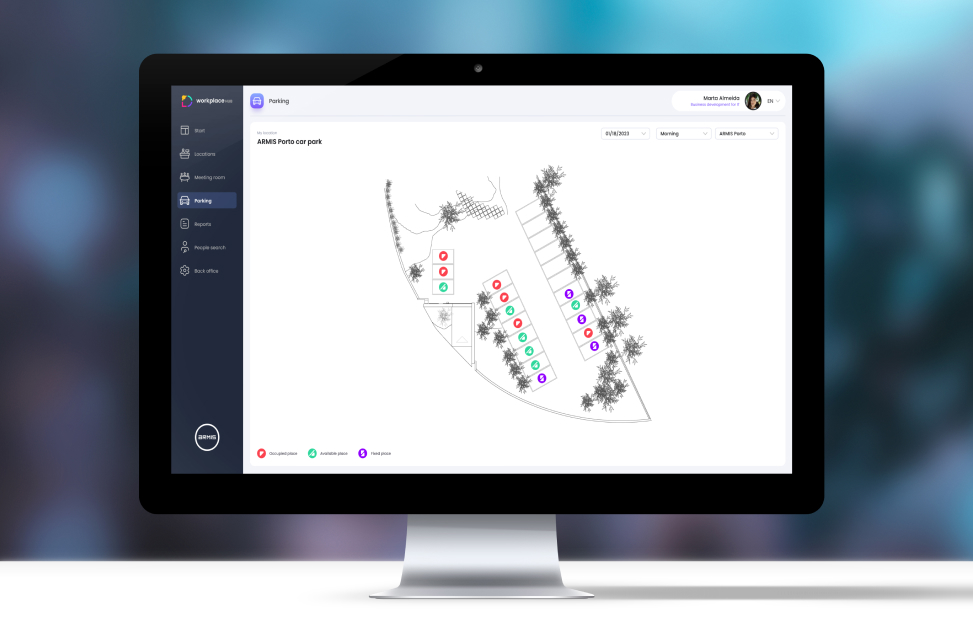
Are the companies' systems prepared for teleworking?
 blog
blog
If most of these organizations are closely following the digital transformation, why do they still offer resistance to a decentralized work regime?
We live in a period of uncertainty in which several doubts arise, solutions are sought, and answers for which everyone's experience and contribution is fundamental. According to the guidance published by the DGS, companies need to be prepared for the possibility that part (or all) of their employees may not be able to go to work due to illness, suspension of public transportation, or school closures.
The question I've been asked is precisely this: are companies prepared for their teams to work remotely? If most of these organizations are closely following the digital transformation, why do they still offer resistance to a decentralized work regime?
The truth is that a large majority of national organizations have focused on the much talked about digitalization of processes, but have not yet fully taken on the transformation of the workplace, i.e. the adoption of a true Modern Workplace.
"Many companies have not moved away from the physical perimeter paradigm (...) and are not taking advantage of the tools they already have"
Many companies have not left the paradigm of their physical perimeter, the office, headquarters, and internal networks. They have effectively transformed their processes, their strategies, but have not convinced themselves that they can actually continue with their normal workflow, anywhere, anytime. Situations like this occur because organizations still don't have full confidence in the systems they use, and end up not benefiting from the advantages of mobility and flexibility that these systems offer.
From our market experience, both medium-sized/large companies and multinationals have acquired technologies and systems that allow them to keep their functions active even when teleworking, without affecting efficiency or productivity. It is important, however, to make some assumptions because not all systems are correctly implemented or configured.
"Whenever we talk to our customers about access outside the physical perimeter and the internal network, questions are raised about identity management and access control."
Adopting innovative solutions not only facilitates collaboration between teams, but also allows us to centralize access monitoring, knowing who is accessing what and when, in a cross-functional, controlled and secure way. However, whenever we talk to our customers about access outside the physical perimeter and internal network, questions are raised about identity management and access control.
When we detach ourselves from a physical perimeter, as is the case of an office, we start to ensure a main channel of communication and interaction, with well-defined accesses and roles. The employee is the identity and starts to access information in the correct way, with the organization having a record of who is accessing what and in an integrated way. We are, therefore, talking about access monitoring, easily applicable by the IT departments of organizations.
"It is possible to define a set of essential tools to enhance teleworking".
Our performance in this area of identity management, security, collaboration and productivity tools, has had, in recent years, the goal of not only implementing the solutions, but also helping our partners and customers to make the most of the solutions they already have licensed.
It is common for us to realize that the customer has many more licensed tools than those they actually use. Often, in a universe of 1000 licensed and empowered users to use the tools, only ¼ benefits from their advantages. The rest try to find other methods to continue their work activities, often resorting to alternative, inadequate and unsafe practices.
This is where an interruption in collaboration, speed in workflows and security arise.
Given our experience, we know that it is possible to define a set of essential tools to enhance teleworking. Tools such as Microsoft Teams, OneDrive or Exchange online, among others, that together empower the employee to continue working and staying active and doing it in a safe, flexible way, with access to all information without compromising the organization's security.
"The big advantage of these tools is the ease of deployment and how quickly the user can adapt"
The great advantage of these As a Service solutions, of modern technology, is in the faster implementation than the roll out of an on prem tool.
The very adaptation of the user to the tools is very intuitive and fast, since they will be used regardless of the physical space where they are located.
The benefits are there to see, and making these tools even more secure and adapted to each organization is relatively quick and simple action.
Our experience with international customers allows us to confirm that it is possible to make this kind of configuration remotely. Being user-friendly, intuitive and rapidly deployable tools, organizations can, within days, transform workspaces in a scalable way and perform actions for a complete adaptation to new needs.
Don't compromise your organization's productivity. Prepare your company and your employees for teleworking!
Talk to us
Rui Costa | Chief Technology Officer
Share this article:
Prepare your company and your employees for the future. Contact us!




